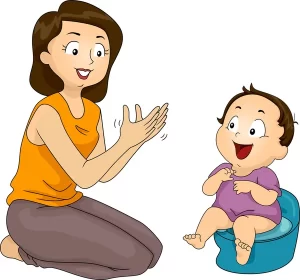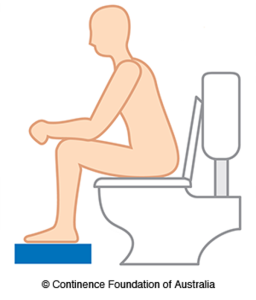Childworks Occupational Therapy – Toilet Blog Series – Part 2
It’s time for the second instalment of Rimjhim’s Toileting Blog Series – a 4 part blog that will take us through until the end of Term 4 2022. This Blog will focus on Physical Skills, Sensory Processing, It’s not just Toileting and Communication. A key developmental aspect of a child’s development, toilet training is one of our major activities of daily living.
It’s Not Just Toileting Part 2 – The Best Way to Sit
There are several muscles that work together to help us complete toileting tasks. As a result, posture is very important when it comes to using the toilet comfortably. Some of the muscles involved in the toileting processes are the pelvic floor muscles – these must relax to relieve our bladder and bowel.
For sitting on the toilet, the following posture is recommended to help relax our pelvic floor muscles.
- Flat feet*, slightly apart
- Knees slightly above hips
- Leaning forward, while keeping back straight and relax tummy
- Arms or elbows on knees
*TIP: For younger children, you can place a stool under their feet to keep their feet flat.
It is important not to strain when sitting on the toilet. For some children learning to use the toilet, sitting on the toilet can be a challenging and stressful experience.
Below are some tips to help your child relax on the toilet:
- Parents and caregivers doing their best to be calm when with the child
- Completing a relaxing activity before and during sitting on the toilet, such as breathing exercises or bubble blowing, reading a book, or playing some calming music.
- Consider the child’s sensory preferences – to feel regulated, they may prefer a warmer temperature, dimmer lighting, or a bathroom free from strong scented products.


Recent Comments